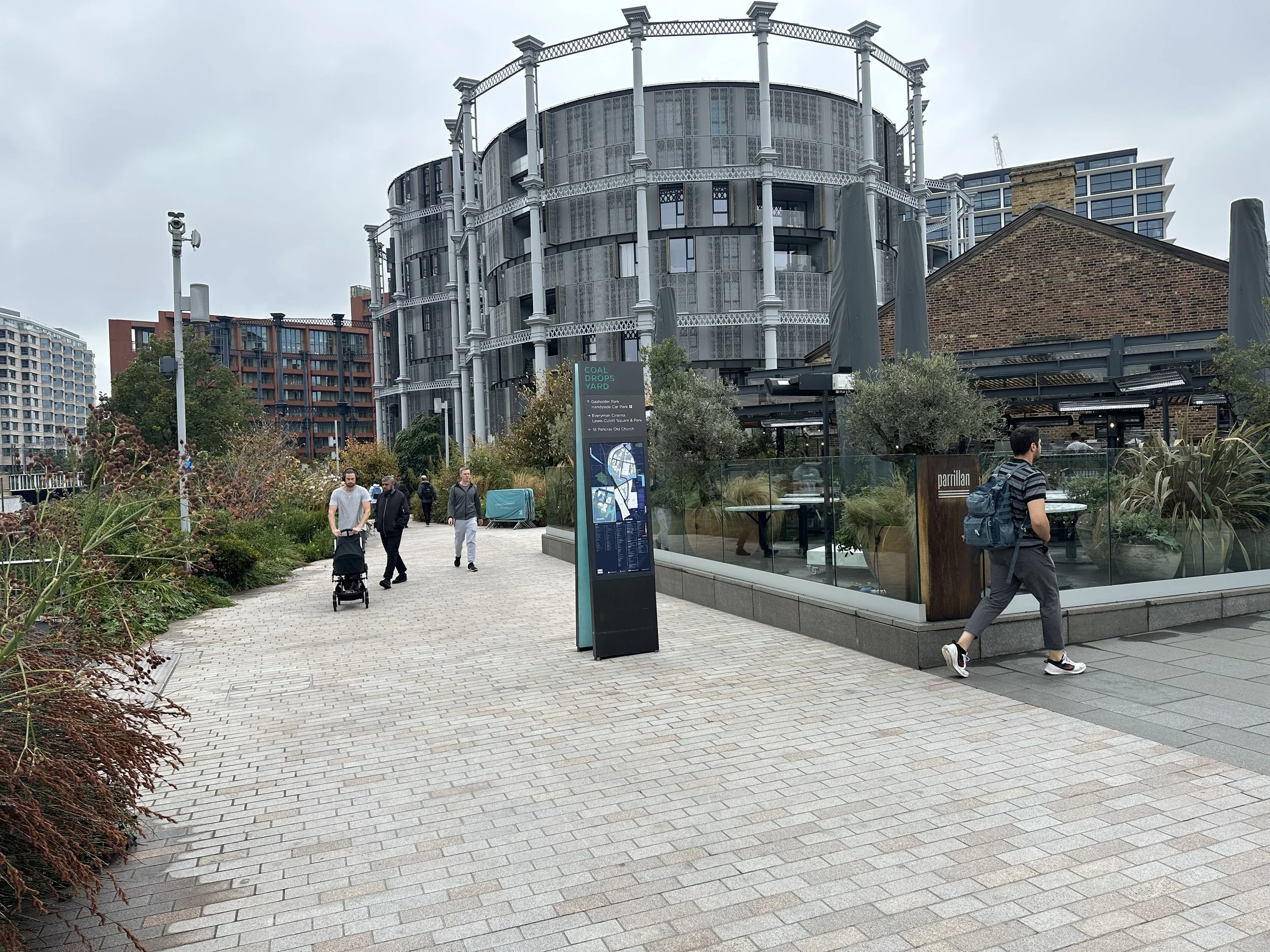Successful Urban Regeneration - A visit to Kings Cross Precinct, London
Kings Cross Precinct. Photo Credit: Garth Falconer.
NZILA Fellow, Garth Falconer, visited Europe late last year. In this article he shares his experience of Kings Cross precinct in London.
At the end of last year, I visited the new Kings Cross precinct in North London. I say ‘new’ because it is still being worked on, though largely completed in the last 10 years, it is being held up as a model for the urban regeneration of large scale brownfields sites.
Certainly it’s a big area, covering some 27 hectares, and the metrics are impressive – 50 new buildings, 10 hectares of open space, around 2000 homes and currently 27,000 jobs / 12,000 people living in the area. The development has been delivered in a cheery upbeat manner with a mix of gritty industrial and with touches of a light colourful aesthetic. And there is more to come.
Clearly they have been doing some things right. And visits such as mine are seeking both much needed inspiration and understanding of how to do large scale projects. Lets look at de-constructing the project:
Canal at Kings Cross Precinct. Photo Credit: Garth Falconer.
Background in urban regeneration
The area became the nexus first for canals and then the railways of the 19th century, connecting London to the northern industrial cities. Changes in transport and industrial production Post World War II saw the area go into a major decline, becoming a backwater characterized by huge helpings of urban blight and social dysfunction. Long singled out for regeneration, several early efforts failed until the Channel Tunnel link was moved to Kings Cross and the new St. Pancras station was built with massive investment by the government.
Land amalgamation and masterplanning
A joint partnership between railways and developers in 2001 allowed single ownership of this large central piece of London. Funded by long term capital from pension funds (including Australian Super) the partnership had time to do things right. After about five years of studies and consultation, a masterplan was prepared by a multi disciplinary team of Allies and Morrision, Porphyrios Associates, and Townshend Landscape Architects. Planning approval was gained in 2006 from a very supportive local Council.
Mixed use area. Photo Credit: Garth Falconer.
Mix of anchors and diversity of activity
Rather than another centre for legal and finance, the masterplan was based on creating mixed use, for working and living. The securing of a university campus alongside headquarters for Google, Facebook, Universal Music and others have anchored the development, aided by a pick of retail, cafes, hotels and art galleries. Part of the attraction equation is that they factored in the retention of 20 low rise heritage buildings and refurbished them into apartments and offices rather than pull them down. The area maximises occupancy with a new high rise.
Tour de force landscape
The area is characterized significantly by a host of created landscapes including: a canal edge waterfront and amphitheatre, raised “Highline” type of walk, and several large plazas and theme gardens. Early work on creating a series of principles to guide public realm development was based on accessibility, heritage, on-site recreation and a range of activities. Key pedestrian routes and public spaces creating destinational placemaking went ahead of the staged building development using profuse plantings and high quality materials. Special feature gardens by other designers were plugged into the framework such the Jellicoe garden by Tom Stuart - Smith, a homage to both Persian gardens and Sir Geoffrey Jellicoe a former Camden resident and founder of IFLA.
Kings Cross Precinct. Photo Credit: Garth Falconer.
Community involvement
I visited the sites’ landscape architects, Townshend Associates, in their basement London studio which features a planted out light well. The team relayed that there was about 6 years of genuine engagement with continual forums, local organisation engagements and one on one meetings. I use the term “genuine” as they really seemed to be aspirational about the relationship between the local communities and the redevelopment. Key to this was providing an open book approach to project information, input into the provision of facilities and the creation of employment opportunities. The community works have apparently spilled over into the international community and currently billboards advertise investment in wind farms in Mongolia and replacing cookstoves in Kenya.
Overall Kings Cross is now buzzing with all sorts of people, attractive buildings and generous spaces, an array of features and activities. The investment in the creating a transport hub, keying into the local communities, promoting mixed land uses, supported by extensive upfront public realm works has been very successful and has avoided the usual criticism of regeneration projects being they exclude the previous inhabitants and the disadvantaged.
I also enjoyed visiting there the Lightbox gallery immersive 360 degree exhibition by David Hockney memorably his slogan “Love Life” seemed to be very fitting.



